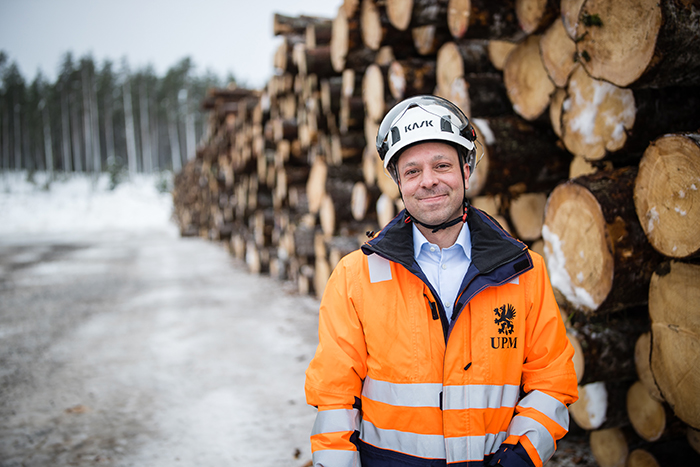UPM Plywood is working to combat climate change through three areas: sustainable forest management, reducing emissions from production, and carbon-storing WISA products.
UPM's business is based on forests. It is important for us to ensure that forests grow from generation to generation. Forests must remain forests. We will not accept deforestation and will ensure that forests always grow more than they are used. In the long term, forests will then act as carbon sinks. UPM plants more than 50 million tree seedlings every year - four new seedlings for every tree used after regeneration felling.
The principles of sustainable forest management can be found in the Finnish Forest Act, forest certification and forest management recommendations. The purpose of certification is to promote the economically, ecologically and socially sustainable management and use of forests so that they provide a good yield in a sustainable manner while preserving their biodiversity.
Growing forest is an efficient carbon sink
The better forests grow, the more carbon they sequester. According to Pekka Pietilä, UPM Plywood Wood Procurement Manager, and Aleksei Kiuru, Wood Quality Manager at UPM Plywood, thinning young growth forests can bring the greatest benefits, both economically and in terms of climate change mitigation.
"Thinning facilitates competition between trees for light and nutrients, so that the best remaining specimens efficiently produce both woody material and absorb carbon dioxide. The effect is particularly significant in trees under 60 years old, when they are growing into the mature logs that WISA plywood is made from," says Pietilä.

Pekka Pietilä works as a Wood Procurement Manager at UPM Plywood.
In Finland, commercial forest growth slows down significantly after 60-100 years, also resulting in a carbon sequestration decline. At this stage, the forest is usually regenerated, and the resulting wood is used to make products that act as carbon stores for the lifetime of the products. After regeneration felling, new seedlings are planted in the area, and these seedlings begin to sequester carbon as they grow.
Properly managed forests both grow and remain vibrant and resistant to damage.
"The forest certificates prove that UPM's and our forest owner customers' forests are managed sustainably and responsibly, considering economic, social and ecological aspects. In addition, biodiversity and environmental values are considered to a greater extent than required by law," says Pietilä.
Winter harvesting has many advantages
The forest industry needs fresh raw materials all year round, and winter is the busiest time for harvesting. In Finland's harsh winter conditions, timber has always been harvested even when temperatures can drop below -20 degrees Celsius, and a thick layer of snow makes movement difficult. Many logging sites can only be reached after the frost has arrived. Forestry professionals choose the right time to harvest according to the soil and road conditions.
"Snow and freezing ground form a load-bearing layer on marshy or otherwise soft terrain and on roads that cannot support forest machines during the thaw," says Pietilä.
Year-round harvesting provides contractors and other forestry professionals with work to do, as well as expensive forest machine investments to make throughout the year.
Winter harvests are especially suitable for thinning spruce stands.
"The roots of spruce are located quite close to the ground surface. A layer of snow protects the roots from damage, and the soil surface depression remains smaller than during the thaw. This is particularly important in thinnings where only part of the trees is removed. In winter, there is also no need to worry about fungal diseases or insect damage, and frost reduces the spread of root rot, which is harmful to forests," says Kiuru.
In addition, winter harvesting has a positive effect on wood quality.
"Frost significantly improves wood preservation. During the winter, outside the growing season, there are fewer moisture fluctuations in logs felled outside the growth season, resulting in more uniform log quality. In winter conditions, the log also stays fresher," says Kiuru, who is responsible for the raw material quality of WISA plywood.
UPM is committed to climate-positive forestry. This means that in the long term our forests act as a carbon sink, i.e. the forests sequester more carbon than it releases into the atmosphere. In other words, our forests grow more than the wood that is removed through felling and natural loss. In this case, the forest's carbon storage also increases.
Forest management practices that maintain or increase the carbon sink effect of forests are positive for the climate. Climate-positive forestry also includes activities to increase forest growth and the creation of new carbon sinks.
This article is part of our new Plywood Beyond Fossils series. The series presents concrete measures UPM Plywood is taking to help mitigate climate change. Read more on our Responsibility Made Easy website.
Text: Anu Ritvanen